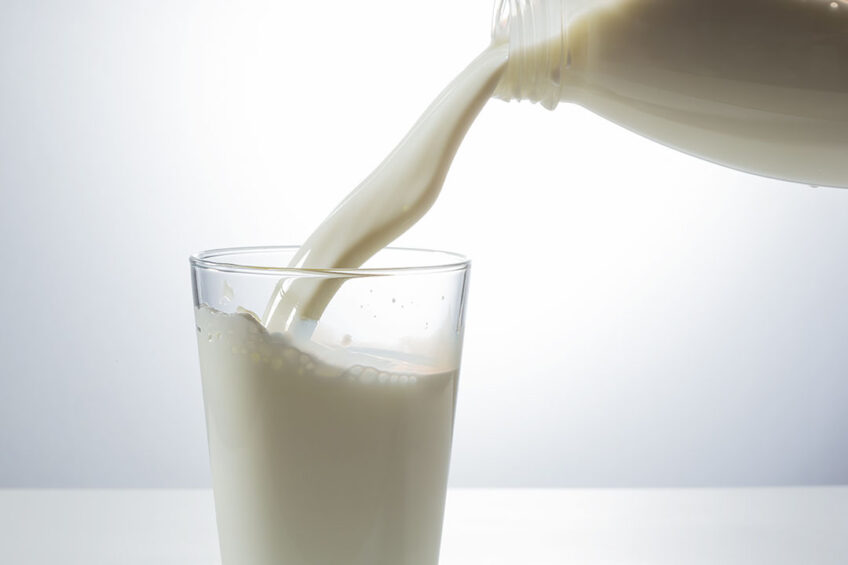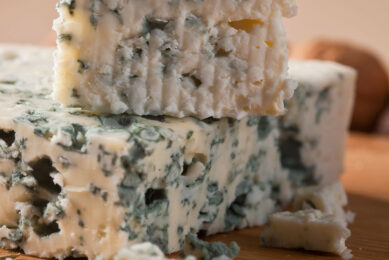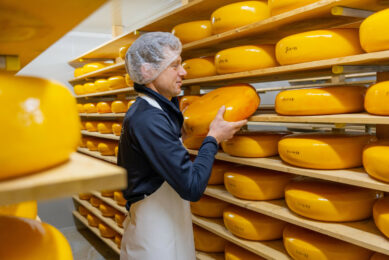European dairy sector: Coping during Covid-19

On 3 June 2020, French Livestock Institute Idele held a webinar on the preservation tactics used by the European dairy sector to deal with Covid-19.
What were the impacts and how has the sector coped? We take a look at what the speakers had to say.

In the first presentation, Gérard You and Christophe Perrot of Idele spoke of the ranking of EU-28 countries on international markets and the competitiveness of the main industries in Northern Europe.
“The European Union is the world’s leading exporter of dairy products,” said Gérard You. World trade of dairy products doubled in value in 10 years and was estimated at € 48 billion in 2019. The EU represented 37% of this trade value, followed by New Zealand and the United States. “A major exporter of cheese and powder (lean powder, whey, and infant milk), the EU-28 was in 2019 the second biggest contributor to the growth of international trade in dairy products in volume behind New Zealand,” You stated. He added that the 6 countries that have contributed to the growth in EU exports to third countries since 2013 are the Netherlands, France, Germany, Ireland, Denmark and Italy.
 The European Union is the world’s leading exporter of dairy products,” said Gérard You.
The European Union is the world’s leading exporter of dairy products,” said Gérard You.
The speaker then turned his attention to French dairy farmers and their incomes. For several years, France has seen its trade surplus (balance of foreign trade in dairy products) decrease with the EU and the country has not taken advantage of the abolition of quotas to increase its volumes. Agricultural income per self-employed French farmer (at € 20.908/year over the period 2013–2017) is now right in the middle between Germany (€ 32.786) and Poland (€ 8.602) and well below the annual income of those in Ireland (€ 51.245 from 2013 to 2017), Denmark (€ 49.191) and the Netherlands (€ 40.306).”French farmers have neither the high milk prices of the Dutch and the Danes nor the low production costs of the Irish,” he summed up.
 3 key factors for optimal herd health and performance
3 key factors for optimal herd health and performance
Numerous factors can impact dairy herd health and performance, including genetics, management, housing and stress.
Christophe Perrot from Idele also spoke, commenting on 4 countries. He explained that in Denmark, the model has become very unequal. The second dairy crisis of 2015–2016 led to many bankruptcies, and takeovers were organised by banks to the benefit of elite agricultural entrepreneurs, including Dutch ones. “The Danes no longer want to produce milk in Denmark or are looking elsewhere for extra-European capital to carry these farms,” commented Perrot. In the Danish dairy sector there has been an increase in organic (10 to 12% of collection) and there is confidence in the Arla cooperative which is very active on topical subjects such as sustainability and the climate. In the Netherlands, there have been very intense debates in the last 2 years about which direction to take. The country has seen sharp reduction in livestock, control of production and upgrades and high milk prices which are necessary to support farms that are often very specialised.
 The Danes no longer want to produce milk in Denmark or are looking elsewhere for extra-European capital to carry these farms,” commented Perrot
The Danes no longer want to produce milk in Denmark or are looking elsewhere for extra-European capital to carry these farms,” commented Perrot
In Germany there is great disparity in the size of farms: 40 cows on average can be seen in the south, 100 average in the north and 200 in the east. “After massive support for investment from the north, a gradual transformation of Bavarian livestock farming is underway,” he said. Finally, Ireland has seen strong growth in volumes (from 5 billion to 7.5 billion litres). “After playing the volume card, the Northern European dairy sectors are preparing to move to upgrading (more added value on the final product),” concluded Perrot.
The consequences of Covid-19 for the dairy sector
As a result of the Covid-19 pandemic, European exports of dairy products were reduced in the first quarter, particularly cheeses and lean powders (see Figure 1). Pandemic containment measures led to significant changes in consumption – moving from eating out to eating in at home, which particularly affected dairy products.
Figure 1 – European exports of dairy products were reduced in the first quarter of 2020, particularly for cheeses and lean powders.

After an initial drop in prices was observed for butter and lean powder, a rebound has occurred since mid-April with better performing cheese prices.
What were the strategies of European dairy processors against Covid-19? For Benoît Rouyer of CNIEL (National Interprofessional Centre for the Dairy Economy), while the Covid-19 pandemic caused an exceptional economic shock with an impact which is not yet fully percieved, there is relative preservation of the dairy sector compared to the collapse of whole sectors of the economy. “The current strategy of dairy operators is defined in terms of 2 major challenges,” stated Rouyer: an operational challenge (ensuring the continuity of milk collection, processing and distribution of dairy products) and a responsibility challenge (guaranteeing the safety of employees and showing solidarity with caregivers and the community in general). Covid-19 arrived at the peak of milk collection, yet very few European companies called on farmers to reduce their production. “The strategy of European dairy companies has been oriented on the operational side, with a brake on investments,” he said.
“We were able to get through this crisis by mobilising teams and moderating the April collection (2 million litres less),” said Bertrand Rouault from Eurial, the milk branch of the Agrial group, a cooperative in the west of France whose milk represents 40% of the total national production.
 Covid-19: Impact on the global dairy sector
Covid-19: Impact on the global dairy sector
The coronavirus has had a huge impact on daily life from the man on the street to businesses.
Brands (53 brands covering 850 products), international sales (37% of turnover) and innovation are the 3 major levers of this French dairy cooperative of 4.300 milk producers, with a collection of 2.4 billion litres of milk per year (including 6% goat milk and 3% organic cow’s milk). While Rouault is pleased to have been able to collect all the milk produced during the lockdown period, the drop in exports and the major change in eating out were not all offset by the increases in retail sales.
The halt in eating out resulted in Eurial losing 75% of turnover in this sector from 15 March to 11 May, resulting in a weakened clientele and the probable disappearance of many players. “What worked was the sales of basic products such as butter, cream or Soignon goat’s cheese,” he said, adding that managing the way out of the crisis is complex.
3 possible scenarios for Irish dairy sector
Catherine Lascurettes, head of the dairy sector of the Irish Farmers’ Association, gave an interesting presentation on the impact of Covid-19 on Irish farmers. “Despite concerns about the impact on farms, rural areas have been affected relatively little by Covid-19,” she said that protocols have ensured continuity of collection (which even increased by 3.6% over the first 4 months of the year).
“From February on, our industry was very reactive and collaboration between all the processors ensured the safety of the employees and the sustainability of the transformation,” recalled Lascurettes. The impact of this situation on producers was a drop of 3 c/l from March to April, cancelling the gains at the end of 2019. “Our battle for the coming months is to put an end to this price reduction,” she said.
 Our battle for the coming months is to put an end to this price reduction,” Lascurettes said.
Our battle for the coming months is to put an end to this price reduction,” Lascurettes said.
According to the Teagasc research centre, Irish dairy income would have increased by 9% in 2020 compared to 2019 without a Covid-19 pandemic. 3 scenarios are envisaged by Teagasc to measure the impact of Covid-19 on Irish agriculture: an optimistic scenario with an increase in milk production of 2%, a milk price drop of 10% and a fall in income of 21% compared to 2019; a median scenario with an increase in production of 1%, a drop of 15% in the price of milk, and a 36% fall in income, and a pessimistic scenario with a decrease in production of 3%, a 20% drop in milk prices and a 49% fall in income (€ 39.505 compared to € 49.346 for the median scenario and € 60.985 for the optimistic scenario). “A global recession impacting the purchasing power of consumers is very likely,” said Lascurettes, who added that other concerns could impact the Irish dairy sector: the impact of Brexit (the United Kingdom represents more than 30% of Ireland’s dairy exports – cheese and butter in particular), the new direction of European agricultural policy, as well as actual government formation talks with the Green Party.
Join 13,000+ subscribers
Subscribe to our newsletter to stay updated about all the need-to-know content in the dairy sector, two times a week.










